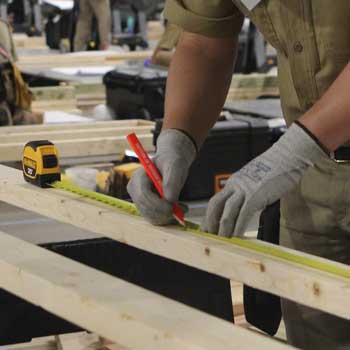Career and technical education (CTE) has always played an important, albeit underappreciated, role in the United States education system. The career skills and hands-on learning opportunities available to students through CTE offers valuable options to young learners.
But like most things around the world, the system of education was thrown into uncertainty due to the COVID-19 pandemic. Schools were shut down, instruction moved online and the very concept of school and education faced many questions.
As vaccinations start to roll out nationwide, we will hopefully be on our way back to something resembling “normalcy” very soon. But as schools start to return to in-person instruction, the questions surrounding how we teach and train new generations remain valid.
In a post-pandemic world, what role will career and technical education have? How will the needs of students, schools and the economy as a whole be met? Here we explore why CTE will be more important than ever in the new world.

While a lot of education is conducted in a lecture type of format, the pandemic has revealed the need and desire for interactive and hands-on elements in learning.
Stuck learning from home via Zoom calls, student participation and interest declined during the pandemic. Student absences have doubled, and some students may be as many as six to 12 months behind by the end of the academic year. Without the opportunities to learn through experiments, creative projects and other tactile things, many students had a more difficult time grasping concepts and making meaningful connections between what they were being taught and why it matters in the real world.
Career and technical education is by nature more hands-on than other traditional forms of education. Because of this, CTE programs had some of the hardest adjustments to make during the pandemic in order to abide by new social distancing guidelines.
But as those hands-on opportunities start to be opened up again, it’s reasonable to expect a shift in how much we as a society value those opportunities. What often got pushed to the background may now get brought to the forefront; starved of chances to learn in any other way than from behind a computer screen, students and parents may look at the CTE programs in their local schools in a new light.
There is numerous research that supports the benefits of hands-on learning, and many of the struggles students faced during the pandemic follow similar trends. Career and technical education has a chance to be a valuable tool in getting this generation of students back on track and excited to learn.
As the waves of shutdowns began to hit the world economy amid the spread of the virus, the idea of “essential industries” emerged based on which businesses needed to remain open and operating. These essential businesses were critical to the basic function of society and could not be done virtually.
This process brought a number of unglorified fields and careers back into the spotlight – many of which are part of the career and technical education track. EMTs, agricultural workers and construction craft professionals were among those deemed necessary and essential.

As non-essential businesses were forced to go digital or close up all together, the United States saw an unprecedented epidemic of unemployment – the unemployment rate in April 2020 soared to more than 14.7%, the highest level on record. Many people, even those with years of experience and numerous degrees and qualifications, found themselves out of work because their industry was unable to function during the pandemic.
While hopefully a situation like this pandemic will be a once-in-a-lifetime scenario, the concept of essential businesses and industries may shift how people think about careers and the skills and training they seek. The idea of “pandemic-proofing” and seeking career paths that have the greatest security in the most unlikely of events could become a key point of consideration moving forward.
A long-standing point of pride within career and technical education is the ability to teach those critical skills that will help students one day feed themselves and their families. The pandemic revealed just how palpable that need was. As we slowly emerge from the cloud of COVID-19 and start thinking about how to best prepare for the next unforeseeable circumstance, CTE could have a big role to play for future generations.
It seems like forever ago that we lived in a world without social distancing and facemasks. In comparison, the before-times now feel like they were without worry.
Unfortunately, there were plenty of problems that society needed to face back then, and while the panic of the pandemic has put some of those issues on the backburner, they still exist and will eventually need to be addressed.
One of those problems is the national student debt situation. Pre-pandemic estimates had total student debt at about $1.6 trillon, a massive burden on young Americans and their bank accounts. As new political leaders discuss ways to ease that burden, many of the underlying causes to the issue still persist, including a toxic mentality that a good job and success in life can only be achieved by earning a four-year college degree.
Another problem involves the dwindling workforce numbers in many key industries such as construction. Prior to the pandemic, estimates projected a demand for 1 million craft professionals by 2023. While the impact of COVID on figures like these is still being analyzed, factors such as the pending retirement for the increasingly aging construction workforce and the lack of new skilled craft professionals entering the industry remain a major cause for concern regarding the long-term sustainability of the industry.
For these and other similar issues that loomed prior to COVID-19, CTE was a major asset and tool in finding a solution. By teaching students important skills and giving them an avenue to explore careers outside of the traditional college system, career and technical education provided young generations more options that were desperately needed. Soon our full attention will turn back to addressing these situations, and CTE will remain a big part of the discussion.
Career and technical education has dealt with a number of curveballs due to the pandemic, but in many ways the importance of this valuable institution has never been greater. As we move forward into a new era, CTE must continue to receive our support.